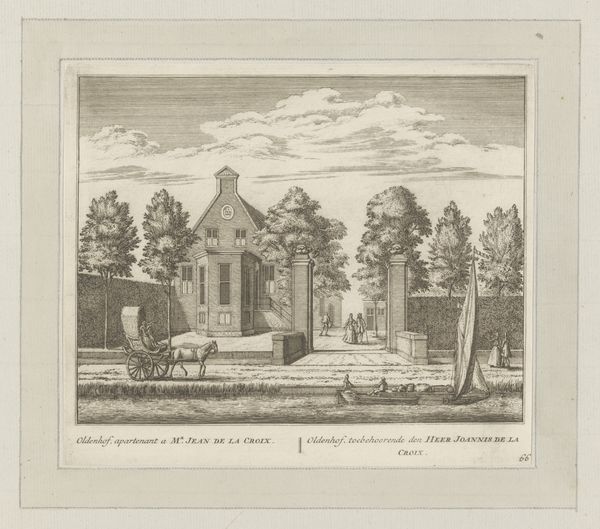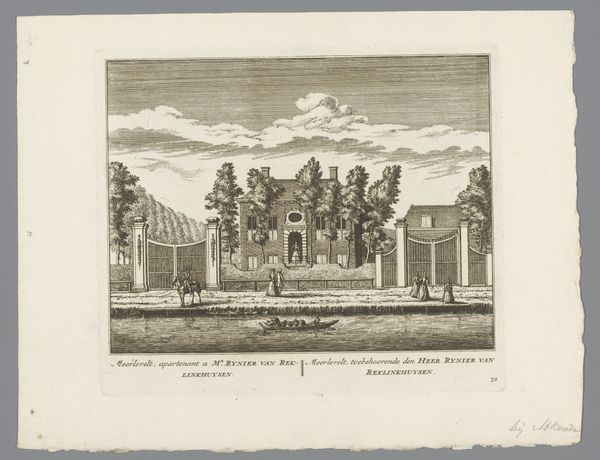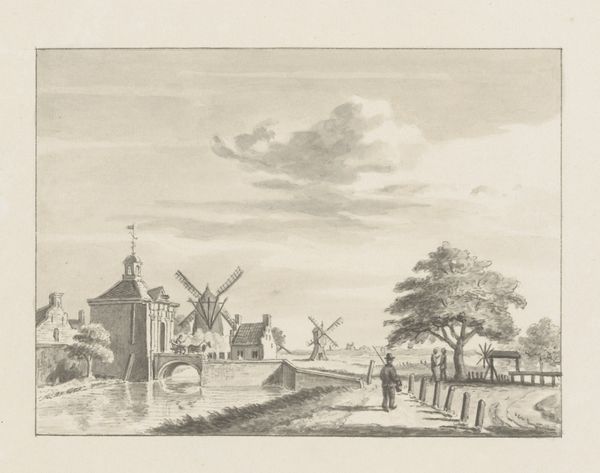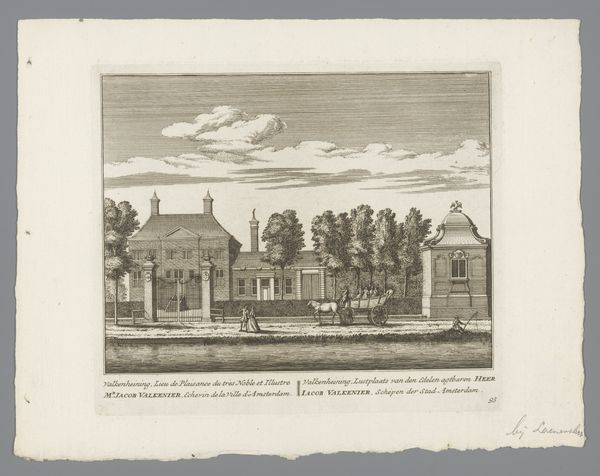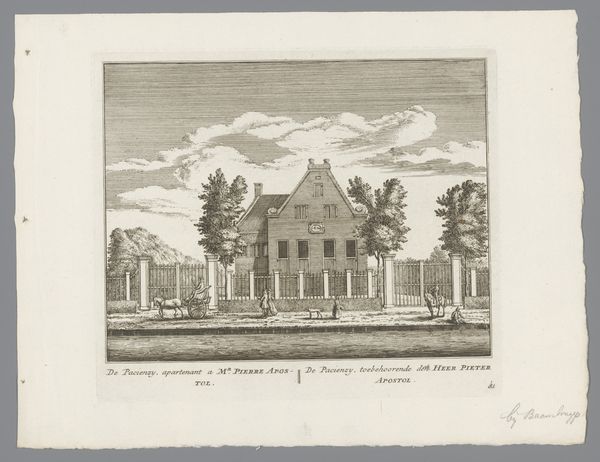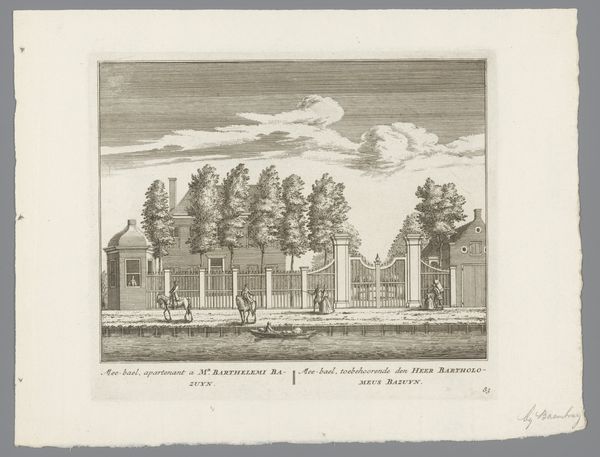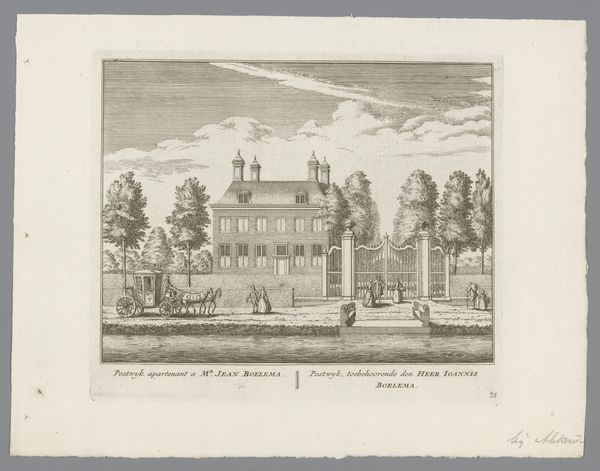
print, engraving, architecture
# print
#
landscape
#
cityscape
#
engraving
#
architecture
#
rococo
Dimensions: height 211 mm, width 323 mm
Copyright: Rijks Museum: Open Domain
Curator: Let's consider this 18th-century engraving, currently held at the Rijksmuseum. The print is called "Gezicht op het Japanse huis in de tuinen van Slot Sanssouci." The artist remains anonymous. Editor: It’s airy and whimsical! Look at the way the architect contrasts the strict lines of the balustrade with the curves of that oversized, pagoda-like roof. It suggests a playful disregard for rigid aesthetic norms, but still retains a balance. Curator: Precisely! Note how the engraving, with its fine lines, emphasizes the texture and the layering of forms, underscoring the Rococo love for ornamentation. What readings do you make of its symbolism? Editor: Well, the "Japanese house" immediately transports me. Eighteenth-century Europe had a real craze for Chinoiserie, an idealized fantasy of the East. To see this imported vision actually materialized within the formal gardens of Sanssouci tells us so much about the cultural aspirations of the Prussian court, wanting to possess a sophisticated image, and its desire for connection with far-off places. Curator: Yes, it reveals a court's desires, and perhaps anxieties. See how the structure presents itself almost as a stage, drawing visitors in through those wide steps and then framing them with statues that, while seemingly Western, adopt this 'exotic' background. The entire landscape itself is treated as a backdrop for self-fashioning. Editor: I notice how carefully the artist positions the figures. There seems to be a conscious emphasis on the gaze—who looks at whom, and where they are positioned in relationship to this Japanese folly? Curator: Good observation. The carefully orchestrated design reflects a particular social hierarchy, mirroring the elaborate power structures within Frederick the Great’s court, where every interaction carried weight. The lines direct us, structuring social performance and political symbolism within the visual space. Editor: In essence, we are viewing more than just architecture—we see power relations, and a fantasy orientalism which fed 18th-century self-perception. The Japanese House becomes a looking glass reflecting a carefully cultivated self-image. Curator: Indeed. This work illuminates how aesthetic tastes were interwoven with expressions of power, turning a landscape into a theatrical backdrop for social performance.
Comments
No comments
Be the first to comment and join the conversation on the ultimate creative platform.
